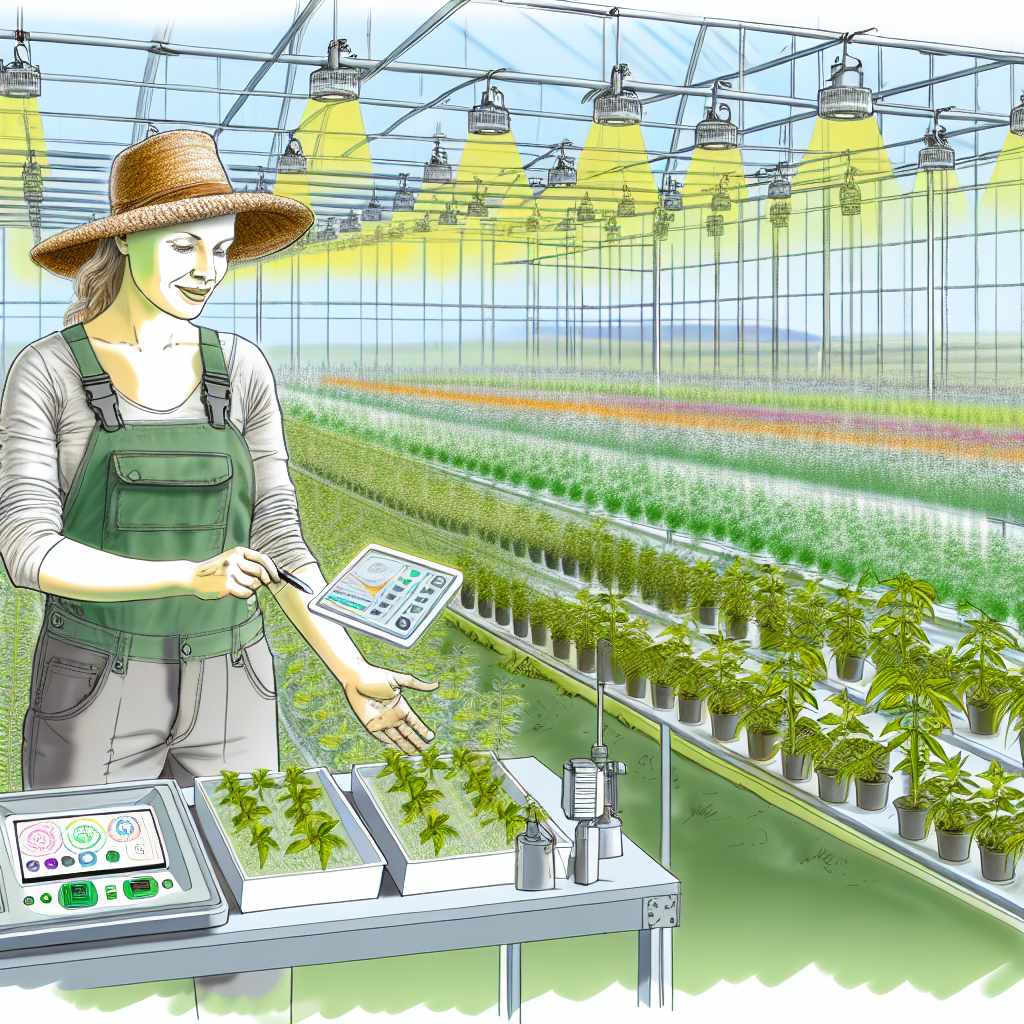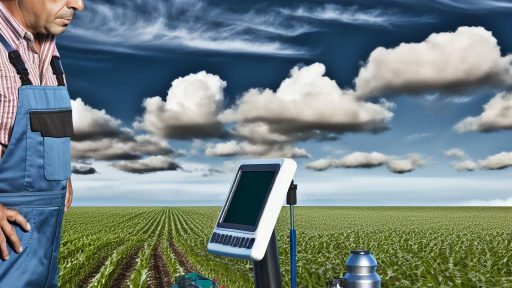Introduction to Controlled Environment Agriculture
Controlled Environment Agriculture (CEA) utilizes technology to optimize plant growth.
This innovative method allows for precise control over environmental conditions.
CEA can include greenhouses, vertical farms, and indoor farms.
Farmers can adjust factors like temperature, humidity, and light.
These adjustments enable year-round crop production.
Crops thrive under consistent conditions, reducing the stress of weather variations.
Moreover, CEA enhances crop quality and yield.
Farmers can produce crops closer to consumers, leading to fresher produce.
Additionally, CEA reduces the need for pesticides, promoting healthier crops.
Water usage is also optimized, making it more sustainable than traditional methods.
Thus, CEA supports food security by producing more with fewer resources.
Transitioning to CEA can also involve high initial investment costs.
However, the long-term benefits often outweigh these initial challenges.
Furthermore, advances in technology continue to reduce operational costs.
In essence, CEA represents a sustainable solution for modern agriculture.
Transform Your Agribusiness
Unlock your farm's potential with expert advice tailored to your needs. Get actionable steps that drive real results.
Get StartedKey Technologies in Controlled Environment Agriculture
Hydroponics
Hydroponics is a soilless method of growing plants.
This technique uses a nutrient-rich water solution to nourish crops.
It allows for greater control over nutrient levels and plant growth.
Consequently, farmers can produce higher yields in smaller spaces.
Additionally, hydroponics reduces water usage compared to traditional farming.
As a result, it promotes sustainability by conserving natural resources.
Aeroponics
Aeroponics involves growing plants in an air/mist environment.
This method suspends plant roots in air and feeds them with a nutrient mist.
It enhances oxygen exposure, fostering rapid growth and health.
Further, aeroponics requires even less water than hydroponics.
Moreover, this technique minimizes the risk of soil-borne diseases.
Overall, it contributes to efficient and sustainable farming practices.
Vertical Farming
Vertical farming optimizes space by growing crops in stacked layers.
This modern approach can be implemented in urban areas.
It reduces the need for large land areas, which is vital in densely populated regions.
Using controlled lighting and climate allows year-round crop production.
Consequently, farmers can supply fresh produce regardless of seasonal changes.
Additionally, vertical farms can significantly lower transportation costs.
By bringing food production closer to consumers, they reduce carbon footprints.
Reduction of Resource Usage: Water, Soil, and Fertilizers
Efficient Water Management
Controlled Environment Agriculture (CEA) significantly reduces water usage.
It employs recirculating systems to minimize waste.
This technology can decrease water consumption by up to 95%.
Moreover, CEA enhances water quality by filtering contaminants.
This method allows farmers to grow crops sustainably even in arid regions.
Showcase Your Farming Business
Publish your professional farming services profile on our blog for a one-time fee of $200 and reach a dedicated audience of farmers and agribusiness owners.
Publish Your ProfileSoil Conservation Techniques
CEA eliminates the need for extensive soil use.
By growing plants in nutrient solutions, it circumvents traditional soil depletion.
This practice helps preserve natural soil ecosystems and promotes biodiversity.
Additionally, it reduces soil erosion caused by heavy machinery.
Farmers can also recycle organic materials, enriching plant nutrients.
Optimal Fertilizer Utilization
Controlled environments allow precise control over nutrient delivery.
This leads to minimal fertilizer usage compared to conventional farming.
Crop uptake increases as nutrients remain readily available.
Furthermore, CEA reduces the risk of nutrient runoff into nearby waterways.
Innovative control systems help monitor and adjust nutrient levels effectively.
See Related Content: AI-Driven Crop Monitoring Techniques
Enhanced Crop Yields and Year-Round Production
Increased Efficiency in Resource Use
Controlled environment agriculture maximizes resource efficiency.
It utilizes water more effectively than traditional farming methods.
This technique minimizes waste and maximizes yield per square foot.
Therefore, growers enjoy higher returns from their investments.
Optimal Growing Conditions
This farming method allows for precise control over environmental factors.
Temperature, humidity, and light levels can be maintained at ideal settings.
Consequently, crops experience fewer stressors which leads to healthier plants.
This control reduces the likelihood of pests and diseases.
Year-Round Production Opportunities
With controlled environments, farmers can produce crops throughout the year.
This continuous production stabilizes income for farmers.
It allows for the cultivation of seasonal crops at any time.
Furthermore, it ensures food supply consistency for communities.
Higher Crop Quality
Crops grown in controlled environments often exhibit superior quality.
These crops typically have enhanced flavors and nutritional value.
Consumers prefer high-quality produce for their health benefits.
This preference drives demand for sustainable farming practices.
Reduced Environmental Impact
This agricultural approach significantly lowers carbon emissions.
It minimizes the necessity for chemical fertilizers and pesticides.
As a result, this enhances soil health and reduces water pollution.
Consequently, controlled environment agriculture promotes sustainability.
You Might Also Like: Implementing Automated Machinery In Organic Farming
Impact on Reducing Carbon Footprint and Addressing Climate Change
Enhanced Resource Efficiency
Controlled environment agriculture optimizes resource use effectively.
This method utilizes water and nutrients more efficiently.
Consequently, it reduces waste and environmental degradation.
Moreover, implementing precision farming techniques helps allocate resources accurately.
This advancement minimizes excess inputs and maximizes outputs.
Reduction in Transportation Emissions
Local production decreases the need for long-distance transportation.
As a result, greenhouse gas emissions substantially decline.
Controlled environment facilities often operate closer to urban centers.
Showcase Your Farming Business
Publish your professional farming services profile on our blog for a one-time fee of $200 and reach a dedicated audience of farmers and agribusiness owners.
Publish Your ProfileThis proximity to consumers significantly reduces logistics-related impacts.
Consequently, fresh produce arrives sooner and with fewer emissions.
Climate Resilience
Controlled environments provide stability against climate variability.
This allows farmers to produce consistently throughout the year.
Additionally, they can mitigate the effects of extreme weather events.
For instance, crops can thrive in regulated temperatures and humidity levels.
As a result, food security improves in changing climate conditions.
Carbon Sequestration Potential
Some controlled environments integrate innovative carbon capture technologies.
This further enhances their potential to sequester carbon dioxide.
Using biochar in growing mediums can improve soil health and carbon storage.
Furthermore, incorporating agroecological practices aids in carbon retention.
Such strategies contribute to overall climate change mitigation efforts.
Find Out More: Data-Driven Farming: Leveraging Software For Better Decision Making

Improved Pest and Disease Management in CEA Systems
Enhanced Control Measures
Controlled Environment Agriculture (CEA) systems provide precise control over environmental factors.
Growers can modify temperature, humidity, and light levels to create optimal conditions.
This environment disrupts pest and disease cycles significantly.
As a result, pest populations decrease, and disease incidence declines.
Integrated Pest Management
CEA systems facilitate Integrated Pest Management (IPM) strategies effectively.
IPM combines biological, cultural, and chemical methods to manage pests sustainably.
For instance, using beneficial insects helps control harmful pests naturally.
In addition, monitoring tools enable real-time tracking of pest populations.
Reduced Chemical Usage
CEA reduces the reliance on chemical pesticides.
Growers utilize targeted treatments only when necessary.
This approach minimizes chemical residues on crops.
Consequently, it enhances food safety for consumers.
Fostering Pest Resistance
Cultivating crops in a controlled environment encourages genetic diversity.
Diverse plant varieties can resist specific pests and diseases better.
This resilience leads to healthier plants overall.
Enhanced Monitoring Techniques
Advanced technology plays a crucial role in pest management.
Cameras and sensors monitor crop health continuously.
Data analytics helps predict pest threats before they impact crops.
As a result, timely interventions become possible, reducing potential losses.
Worker Safety and Reduced Impact
Reducing pesticide usage improves worker safety in CEA systems.
Workers face fewer health risks associated with chemical exposure.
This creates a safer working environment overall.
Moreover, the environment benefits from decreased pollution and runoff.
Explore Further: Selecting The Best Automated Machinery For Small Farms
Economic Benefits: Cost Efficiency and Market Access
Improved Cost Efficiency
Controlled environment agriculture (CEA) drastically reduces operational costs.
This method minimizes the use of resources like water and fertilizers.
Additionally, labor costs become lower due to automation and technology integration.
Showcase Your Farming Business
Publish your professional farming services profile on our blog for a one-time fee of $200 and reach a dedicated audience of farmers and agribusiness owners.
Publish Your ProfileFarmers can achieve higher yields by optimizing growth conditions.
Moreover, year-round production leads to consistent income streams.
Enhanced Market Access
CEA allows farmers to tap into local markets effectively.
Fresh produce can reach consumers faster due to proximity.
This accessibility increases market opportunities for various crops.
Farmers can also command higher prices for organic and niche products.
Additionally, reducing transportation costs becomes easy with nearby urban markets.
Risk Mitigation and Stability
Controlled environments shield crops from unpredictable weather conditions.
This stability reduces the chances of crop failure or loss.
Farmers experience fewer financial risks from climate variability.
Ultimately, this creates a more stable income situation for producers.
Furthermore, consistent quality attracts higher-paying customers.
Investment and Job Creation
Investing in CEA technologies spurs economic growth in communities.
New jobs emerge in technology, management, and maintenance sectors.
With flourishing operations, local economies benefit immensely.
Additionally, educational programs around CEA spread knowledge and skills.
This further solidifies the community’s ability to innovate in agriculture.
Social Impacts: Improving Food Security and Local Economies
Enhancing Food Security
Controlled Environment Agriculture (CEA) plays a crucial role in enhancing food security.
It allows for year-round production, regardless of external weather conditions.
This consistency reduces dependency on traditional farming, which is often vulnerable.
Consequently, communities can access fresh produce throughout the year.
In particular, urban areas benefit from localized food systems.
This reduces transportation costs and carbon emissions associated with food distribution.
Supporting Local Economies
CEA also supports local economies by creating job opportunities.
These jobs range from agricultural labor to technology and management roles.
In fact, local farms can partner with businesses to create a sustainable supply chain.
This collaboration strengthens community ties and boosts local economies.
Moreover, CEA often uses eco-friendly technologies.
These practices attract environmentally conscious consumers, further stimulating local businesses.
Promoting Community Engagement
Community engagement significantly benefits from controlled environment agriculture.
Local schools can integrate CEA into educational programs, teaching students about sustainability.
Community gardens can provide hands-on experience while promoting healthy eating habits.
Furthermore, farmers’ markets promote fresh local produce.
These gatherings foster connections between consumers and local growers.
As a result, communities develop a support system for local agriculture.
Addressing Nutritional Needs
CEA contributes positively to addressing nutritional needs in communities.
Fresh and nutritious produce is vital for healthy diets.
When communities have access to local food sources, they consume higher-quality produce.
Programs can be developed to provide affordable options for low-income families.
Ultimately, this enhances overall community health and well-being.
Showcase Your Farming Business
Publish your professional farming services profile on our blog for a one-time fee of $200 and reach a dedicated audience of farmers and agribusiness owners.
Publish Your ProfileAdditional Resources
Controlled Environment Agriculture Innovation Center – Institute for …




